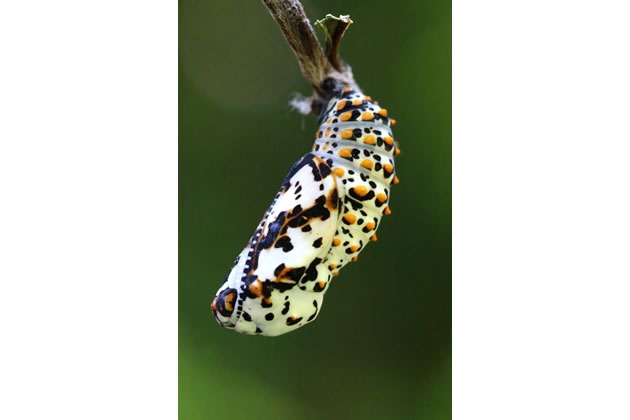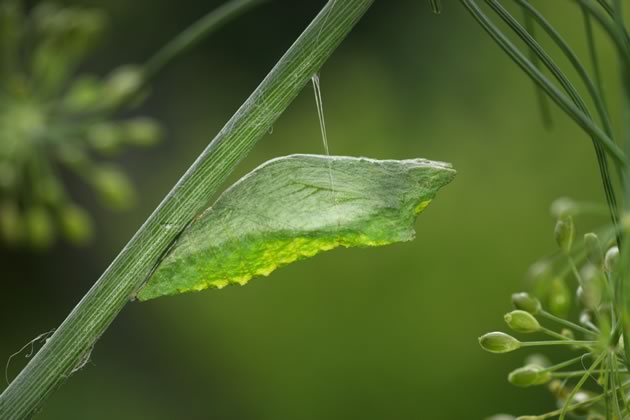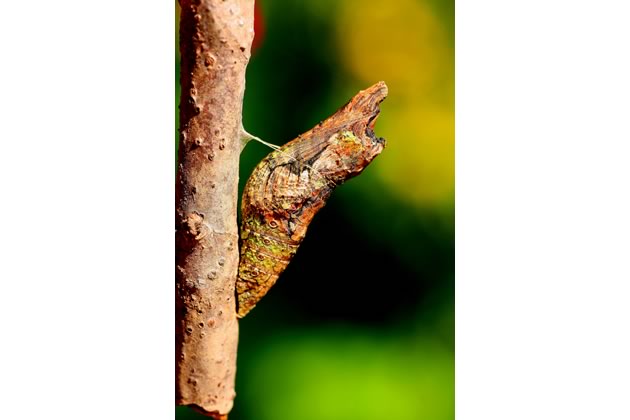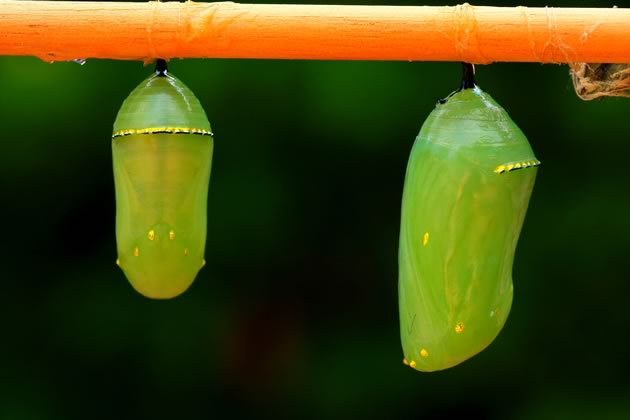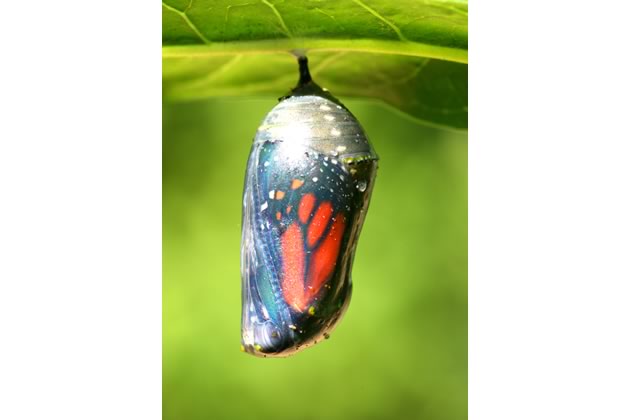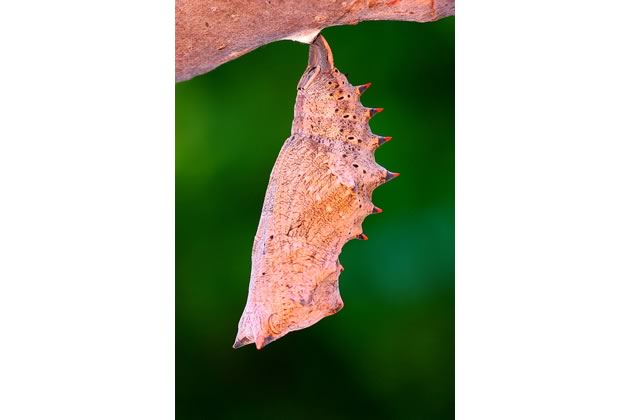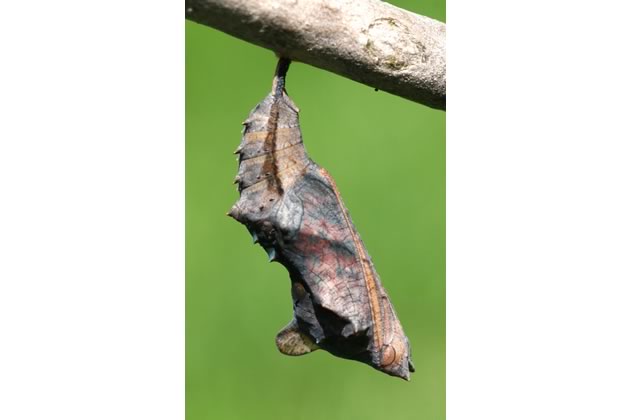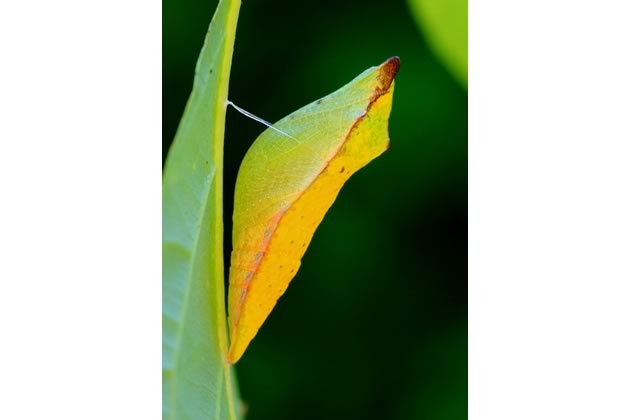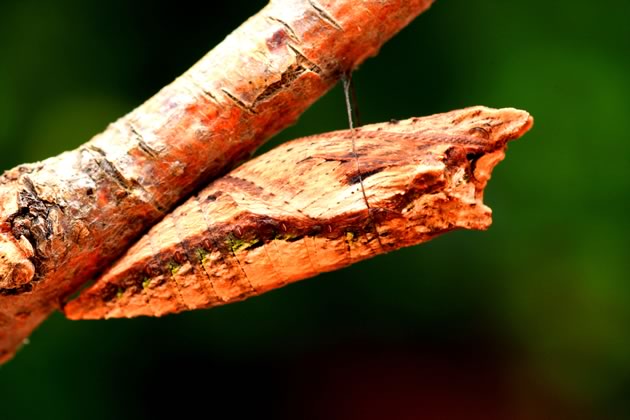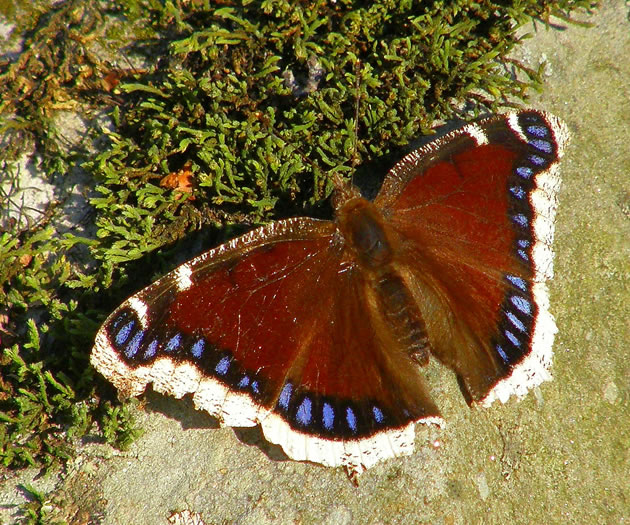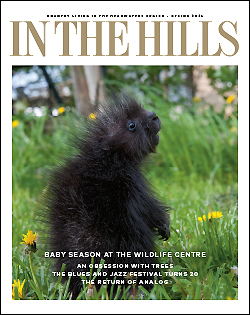Chrysalides
With a few exceptions, chrysalides are designed to be overlooked, to allow the wondrous alchemy of metamorphosis to proceed undisturbed.
Chrysalides are among nature’s most exquisite creations – biotic jewels brimming with promise. But theirs is a concealed beauty. With a few exceptions, chrysalides are designed to be overlooked, to allow the wondrous alchemy of metamorphosis to proceed undisturbed.
All of us know the beauty of monarch butterflies. Monarch chrysalides are equally striking. For two weeks or so they are bright green, flecked and beaded with gold. Then, just prior to emergence, the orange and black wings of the nascent butterflies shine through the chrysalid membranes.
Other chrysalides, like those of the mourning cloak or the question mark butterfly, are ornate creations, decorated with ridges and fins, contours and cambers, as if molded by the hands of a master sculptor— a sculptor who chooses to impart a touch of menace. The spikes on these chrysalides evoke the business ends of medieval maces.
Some chrysalides are astonishingly deceptive. Giant swallowtail chrysalides look like broken twigs, complete with a patina of “lichen” to enhance the ruse. Tiger swallowtail chrysalides present a similar deadwood appearance.
Chrysalides of other swallowtail species opt to camouflage among greenery. They are gorgeous objets d’art, rivalling the beauty of monarch chrysalides. Examples are those of spicebush swallowtail and of the summer generation of black swallowtails.
Black swallowtail chrysalides formed in the autumn, however, are brown, testimony to nature’s attention to detail. These brown chrysalides persist through the winter – a time when brilliant green would be a beacon for predators.
Not all chrysalides are cryptic. The stunning white chrysalides of Baltimore checkerspots, flecked with orange and streaked with brown, stand out against green vegetation. Why? Some suggest the checkerspot chrysalides mimic bird droppings. Or the bright colours might advertise toxicity, warning potential predators away.
Chrysalides are concealed gems. Finding them in the wild is astonishingly difficult. Easier is finding caterpillars and rearing them until the chrysalides are formed. My next blog will explain how I do this.
Related Stories
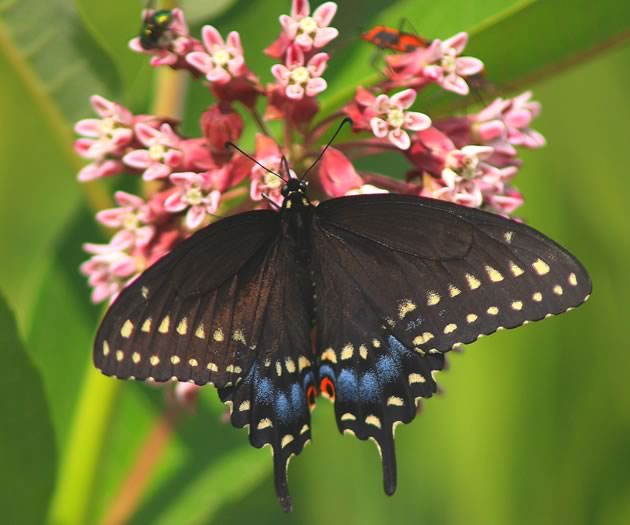
Butterflies
Jul 8, 2015 | | Notes from the WildButterflies are some of the most beautiful and interesting creatures on earth and can be easily attracted to your garden.
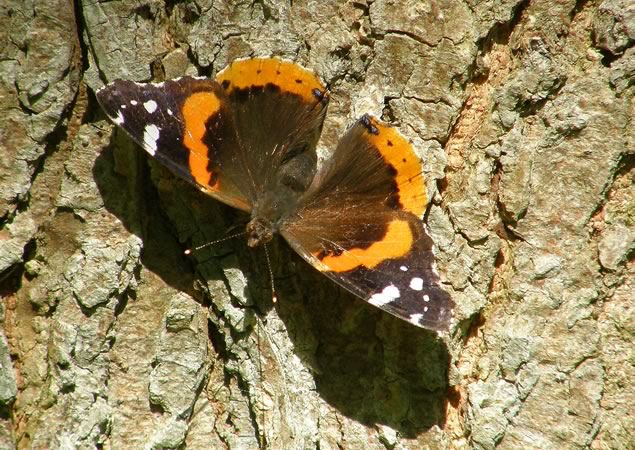
Butterfly Invasion
May 2, 2012 | | BlogsTwenty times more admirals than normal are moving into the province.
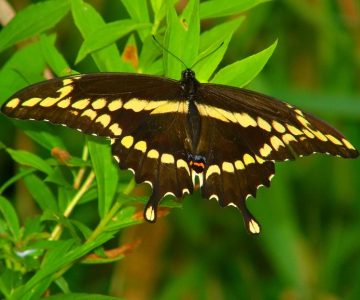
Giant Swallowtail Butterflies
Aug 9, 2012 | | Notes from the WildGiant swallowtail caterpillars are branded as “orange dogs” in the American south because they eat the foliage of citrus crops including orange trees.
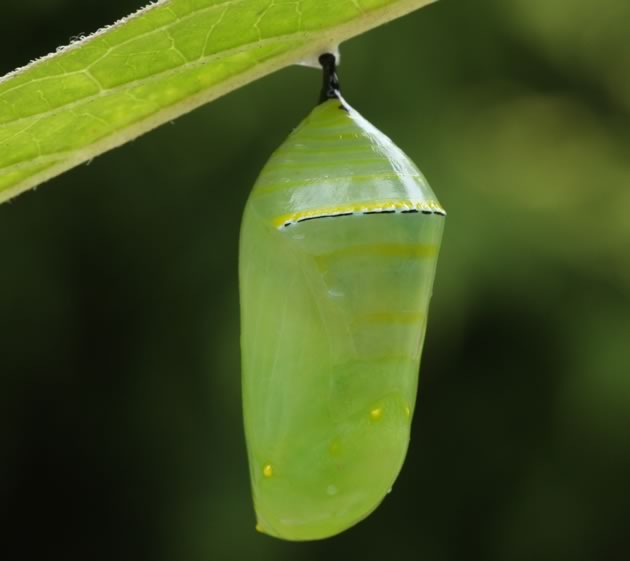
Monarch Butterfly – RIP 2026
Aug 9, 2013 | | BlogsMost of us are old enough to remember when monarchs were a frequent sight in meadows and gardens.
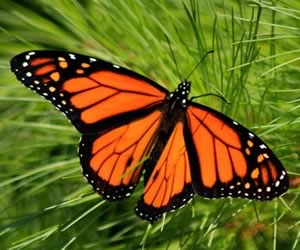
Monarchs: Children of the Sun
Aug 30, 2010 | | Notes from the WildMonarchs are children of the sun. The boldness of Sol this summer has energized their life cycle.



